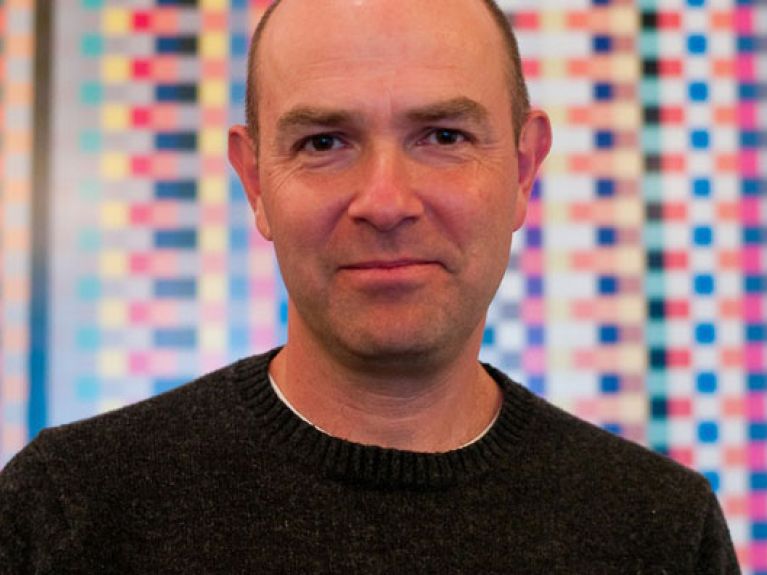Do it yourself
Internet visionary Chris Anderson looks into the future of 3D printing.

EVERYTHING IS POSSIBLE
The development of 3D printers has only just begun. In 10 or 20 years they will not only be quiet and fast, but also able to print many different materials – from plastic to cellulose and even food. Like inkjet printers, they will contain several colour cartridges and be able to print a multitude of mixed colours.
EVERYTHING IS COPIED
We can copy reality – at least in the quality of a Hollywood film prop. The resolution will gradually improve. The next step will then go under the surface: not only will the shape be copied, but also the function.
PRINTING COMES FIRST, THEN MORALS
Today we can copy and identify DNA on a kitchen table. Tomorrow we will be able to sequence DNA in a similar way. DNA synthesis, DNA modification and other genetic engineering techniques will follow. The days when only a few professional labs can use these technologies are numbered. People will then begin to manipulate life.
FIRST THE CONSUMER, THEN THE PRODUCT
Of course we will not all cultivate our own food or forego the comforts of well stocked stores. Nevertheless a future in which more things can be manufactured on demand rather than industrially produced, transported, stored and sold offers a favourable starting point for an economy driven by social rather than commercial interests.
WE ARE ALL ENTREPRENEURS
The Web has democratized the means of innovation and production. Program code can transform every new service idea into a product. Today you no longer need special programming skills; you can learn what you need online. You no longer need patents. With a single key press you can “deliver” your product to billions of potential customers worldwide. Crucially, the gap between “inventor” and “entrepreneur” is so small today that it barely exists.
WE ARE ALL DESIGNERS
Thirty years after handicraft lessons were taken off the curriculum and most of the manufacturing sector was relocated abroad, there are now good reasons to get your hands dirty again. Desktop fabrication is entering the mainstream, and it is time to put “making things” back on the curriculum – not as the workshop class of the past, but as lessons in design.”
WE ARE ALL INDUSTRIAL ARTISANS
The Maker Movement opens up the possibility of being small and global, artisanal and innovative, high-tech with low costs, starting small and growing large. Above all, however, the opportunity arises to produce products that the world needs without realizing it because they do not fit into established patterns of mass products.
THERE ARE MASSES OF NICHES
We will simply see more of everything: more innovation, in more places, from more people, who will concentrate on more and narrower niches. Together all these new products will reinvent the industrial economy because although often made in batches of only a few thousand, they will be precisely the right products for increasingly demanding consumers.
The German edition of Makers: The New Industrial Revolution was published in January 2013 by Carl Hanser Verlag in Munich.
CHRIS ANDERSON
The bestselling US author, who was born in London in 1961, was editor-in-chief of Wired until 2012. In his latest book, Makers: The New Industrial Revolution, he describes the trend towards do-it-yourself production. He explains, for example, how intelligent product ideas enable people to compete with established manufacturers and break the power of brandname companies.
The eight theses that appear here are abstracts translated from the German edition of his book.
